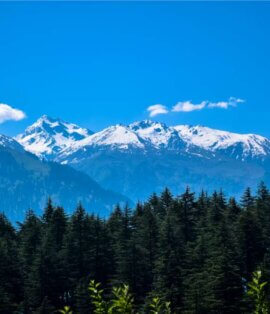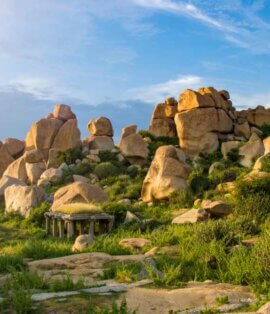India, a land of diversity and centuries of history, boasts a stunning collection of 44 UNESCO World Heritage Sites. These sites represent the country’s rich cultural, historical, and natural heritage, encompassing iconic monuments, ancient cities, biodiversity hotspots, and natural wonders. This guide introduces each of these magnificent sites, offering a complete travel experience through India’s living legacy.
India’s 44 UNESCO World Heritage Sites are categorised into:
- 36 Cultural Sites: These include monuments, architectural wonders, ancient cities, and archaeological marvels that highlight India’s rich history, art, and cultural evolution.
- 7 Natural Sites: These sites include protected areas that preserve exceptional ecosystems, unique biodiversity, and stunning landscapes.
- 1 Mixed Site: This site is recognised for its unique cultural and natural significance.
Let’s take a journey through these spectacular destinations.
Iconic Cultural Sites
India’s cultural heritage sites offer a glimpse into the country’s architectural splendour, ancient civilisations, and rich spiritual traditions.
1. Agra Fort (1983)
The Agra Fort is a massive red sandstone fort that was once the royal residence of the Mughal emperors. Located near the Taj Mahal, it showcases a beautiful blend of Islamic and Hindu architecture, with stunning palaces, mosques, and courtyards. The fort also offers spectacular views of the Taj Mahal.
2. Ajanta Caves (1983)
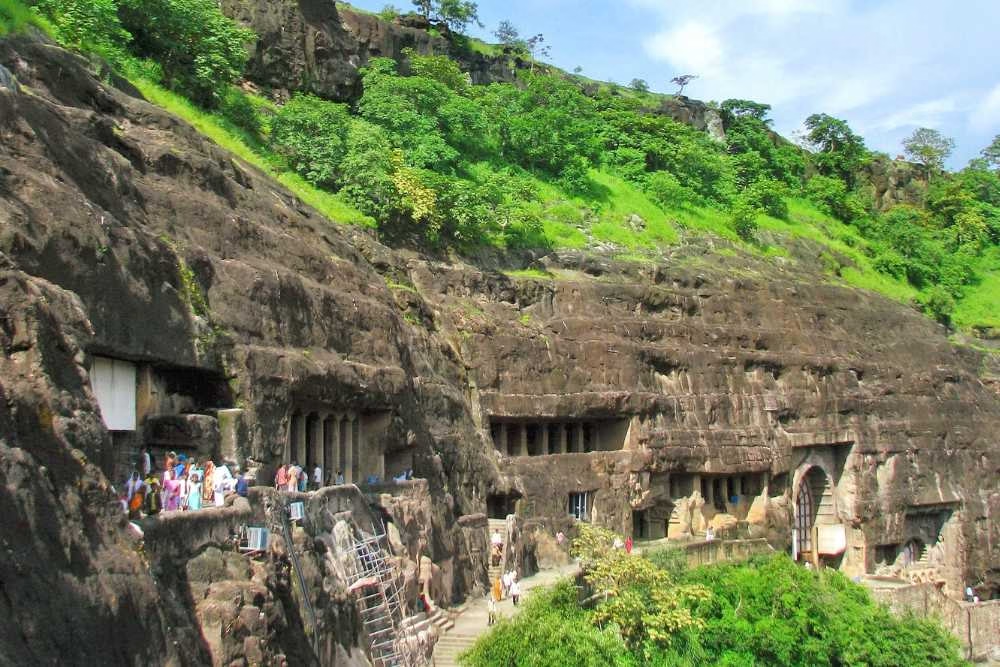
The Ajanta Caves, carved into a cliff, contain 30 rock-cut Buddhist cave monuments that date back to the 2nd century BCE. They are renowned for their exquisite frescoes and sculptures, which depict the life of the Buddha and various Buddhist teachings.
3. Archaeological Site of Nalanda Mahavihara at Nalanda, Bihar (2016)
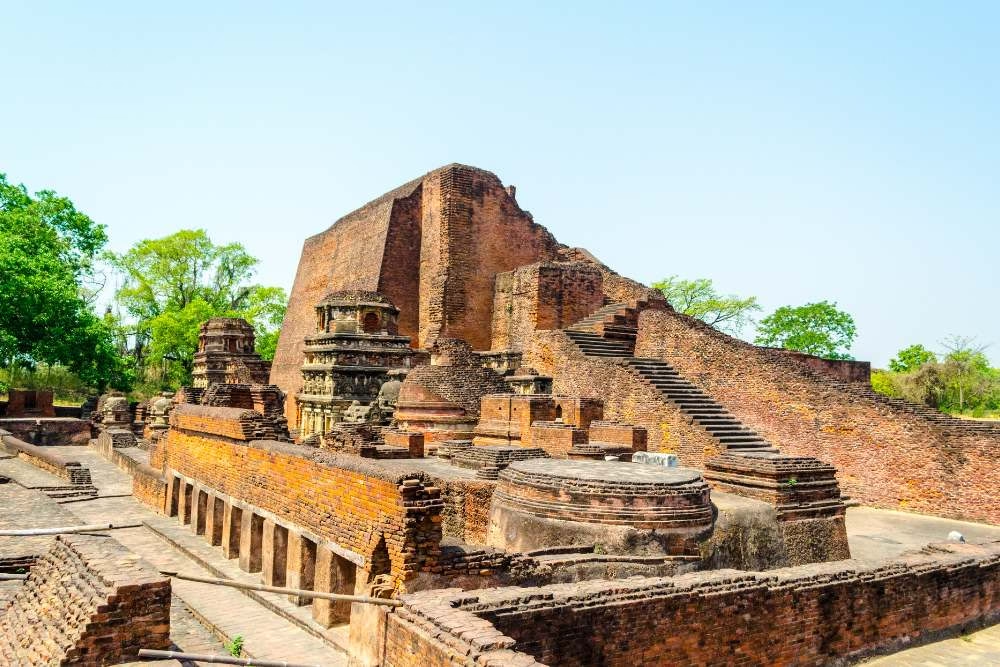
This ancient Buddhist university was one of the first residential universities in the world, attracting scholars from across Asia. The site features the ruins of monasteries, temples, and lecture halls, offering insight into the Buddhist monastic lifestyle.
4. Buddhist Monuments at Sanchi (1989)
Sanchi is home to one of the oldest and best-preserved stupas (Buddhist shrines) in India, dating back to the 3rd century BCE. The site includes stupas, temples, and monolithic pillars, illustrating the evolution of Buddhist architecture.
5. Champaner-Pavagadh Archaeological Park (2004)
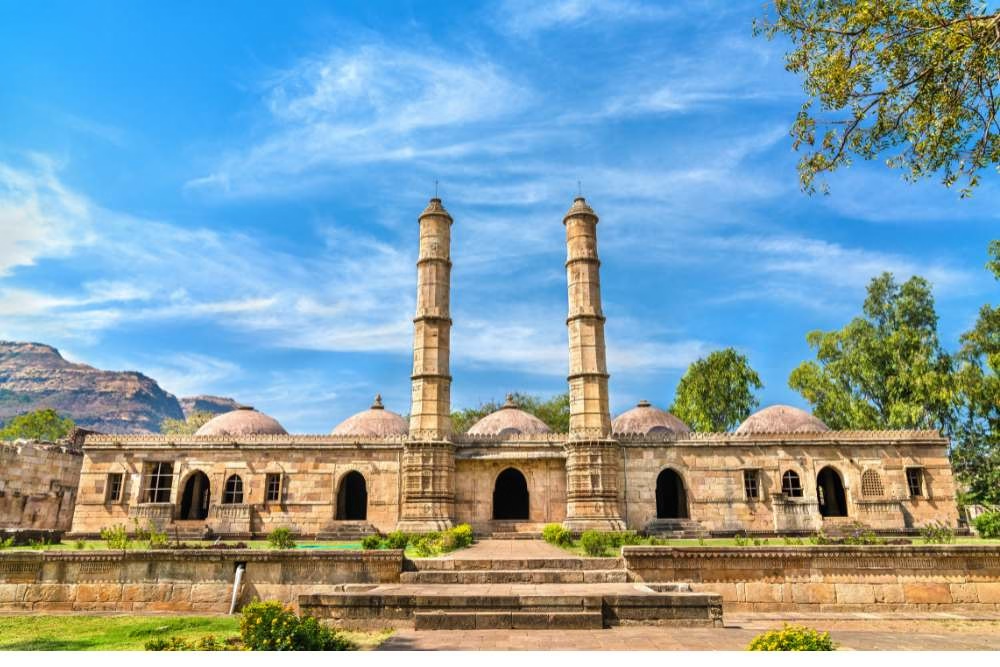
Located in Gujarat, this park features the ruins of an ancient city, including temples, mosques, stepwells, and forts, offering a unique blend of Islamic and Hindu architecture.
6. Chhatrapati Shivaji Terminus (formerly Victoria Terminus) (2004)
A UNESCO World Heritage Site, this fusion of Victorian Gothic and traditional Indian architecture is one of Mumbai’s most iconic landmarks. Its intricate design and historical significance make it a must-visit.
7. Churches and Convents of Goa (1986)
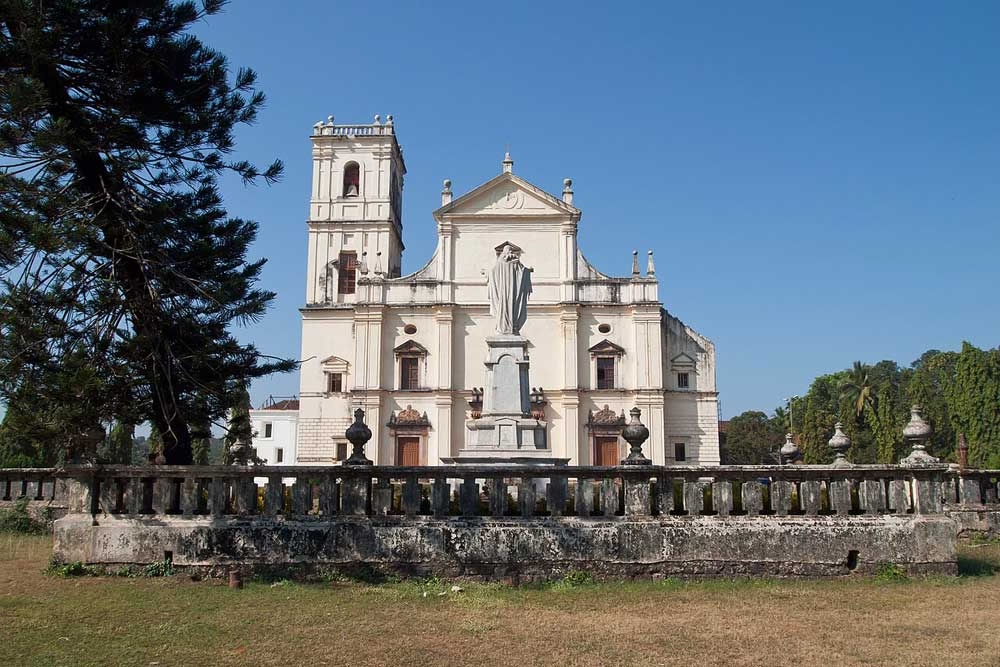
Goa’s churches and convents, particularly those in Old Goa, represent the legacy of Portuguese colonial rule. The Basilica of Bom Jesus and Sé Cathedral are the most famous, with intricate Baroque architecture and stunning murals.
8. Dholavira: A Harappan City (2021)

Dholavira is one of the most significant archaeological sites of the Indus Valley Civilisation. It offers a glimpse into urban planning, water management, and social organisation from over 4,000 years ago.
9. Elephanta Caves (1987)
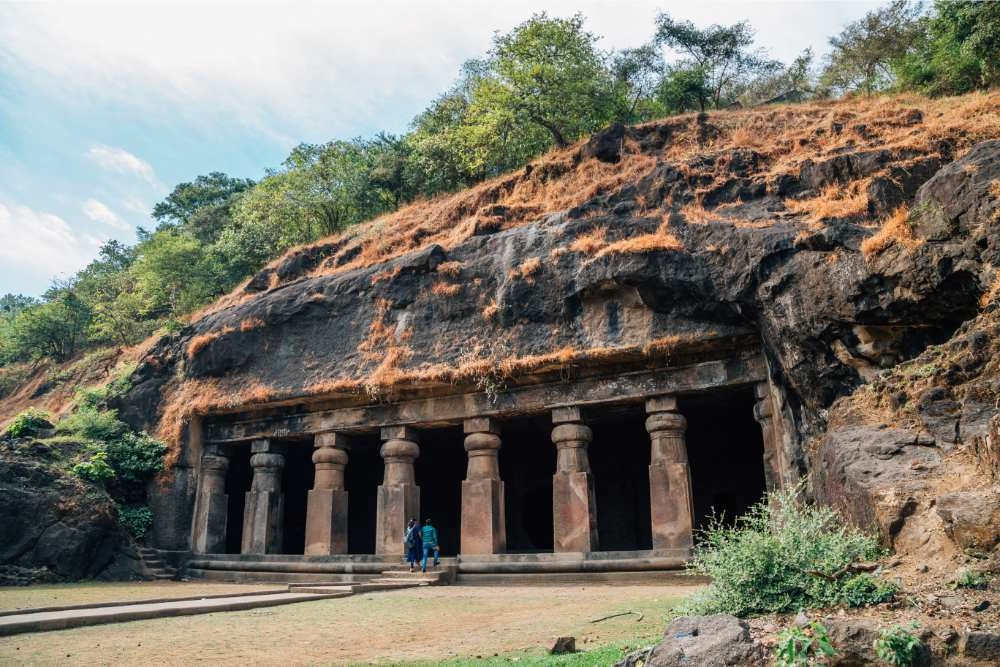
Located on an island off the coast of Mumbai, the Elephanta Caves are rock-cut temples dedicated to Hindu deities. The caves are particularly famous for the massive sculpture of Lord Shiva.
10. Ellora Caves (1983)
The Ellora Caves, located in Maharashtra, feature a complex of Buddhist, Hindu, and Jain temples and monasteries carved out of rock. The Kailasa Temple (Cave 16), a single monolithic structure, is an awe-inspiring achievement of ancient engineering.
11. Fatehpur Sikri (1986)

A city built by Emperor Akbar in the 16th century, Fatehpur Sikri is a stunning example of Mughal architecture. The town, with its palaces, mosques, and courtyards, remains a well-preserved example of Mughal urban planning.
12. Great Living Chola Temples (1987, 2004)
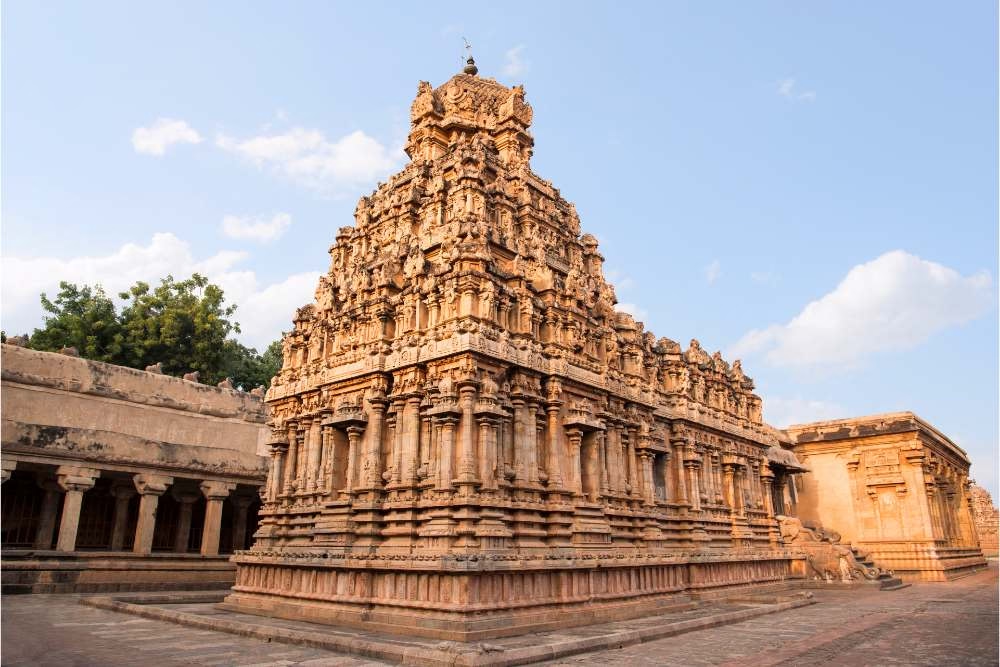
These temples, such as the Brihadeeswarar Temple in Thanjavur, are masterpieces of Dravidian architecture, built by the Chola dynasty. They are notable for their grand scale and intricate sculptures.
13. Group of Monuments at Hampi (1986)
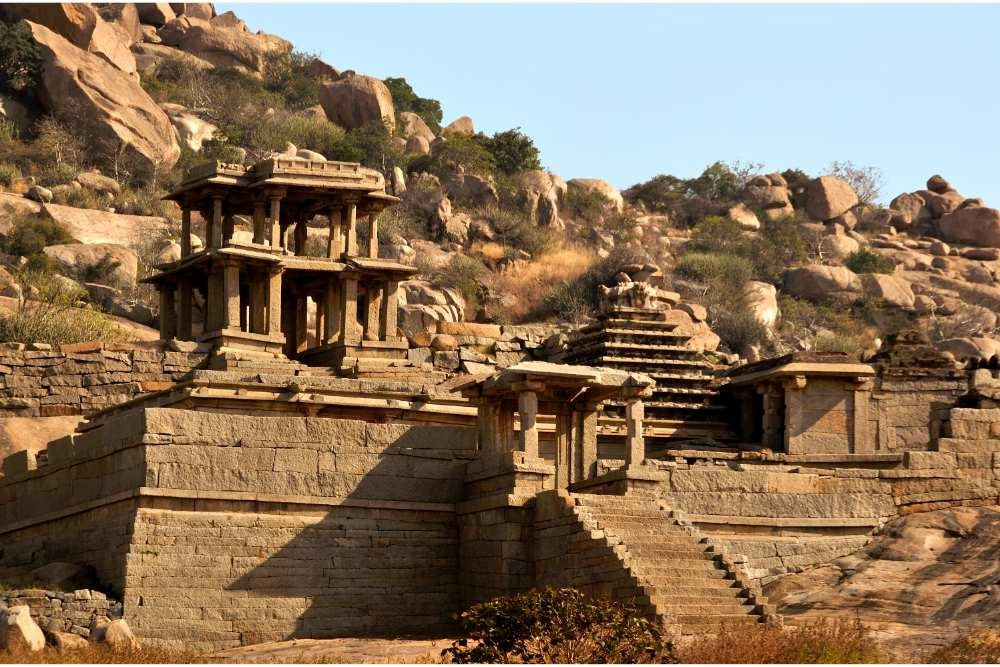
Hampi, once the capital of the Vijayanagara Empire, is known for its stunning temples, palaces, and monuments scattered across a boulder-strewn landscape. The Virupaksha Temple and the Vittala Temple, with its stone chariot, are key highlights.
14. Group of Monuments at Mahabalipuram (1984)
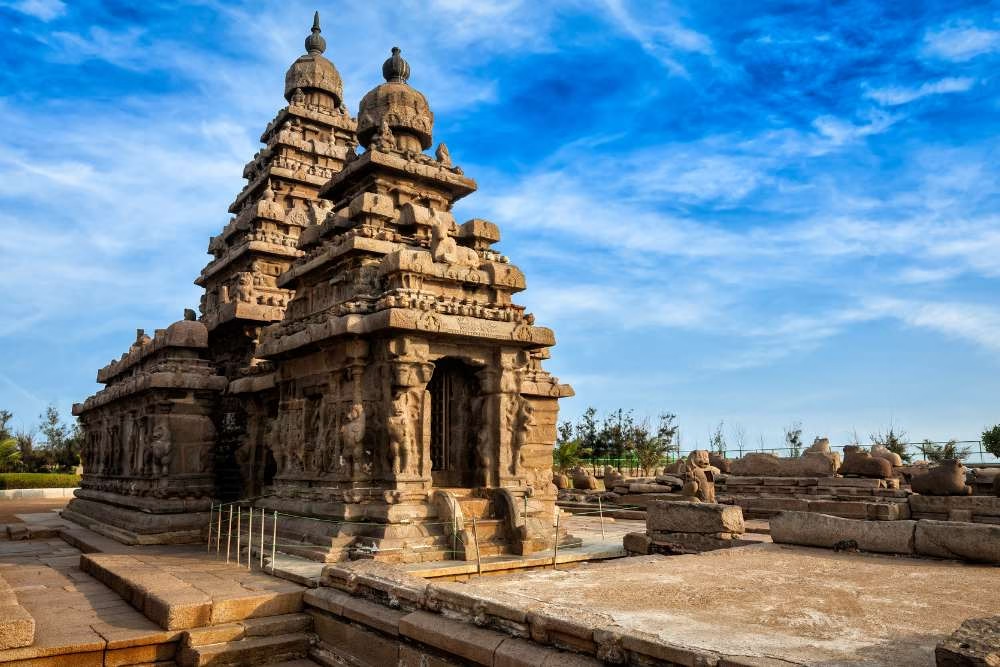
This site features rock-cut temples and sculptures, including the famous Shore Temple and the Five Rathas, showcasing the artistry of the Pallava dynasty.
15. Group of Monuments at Pattadakal (1987)

Pattadakal in Karnataka is home to a collection of temples built in the 7th and 8th centuries. The site reflects a blend of architectural styles, both Dravidian and Nagara, representing the best of Chalukya architecture.
16. Hill Forts of Rajasthan (2013)
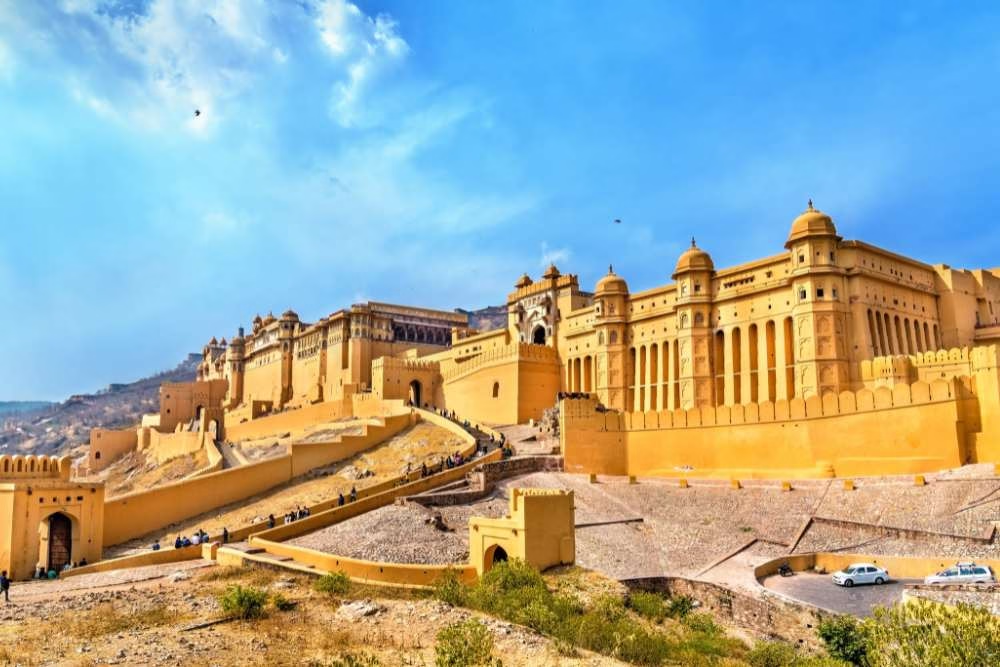
This site includes six monumental forts in Rajasthan: Chittorgarh, Kumbhalgarh, Ranthambore, Gagron, Amer, and Jaisalmer. These forts are known for their strategic location and grand architecture, offering panoramic views of the surrounding landscapes.
17. Historic City of Ahmadabad (2017)
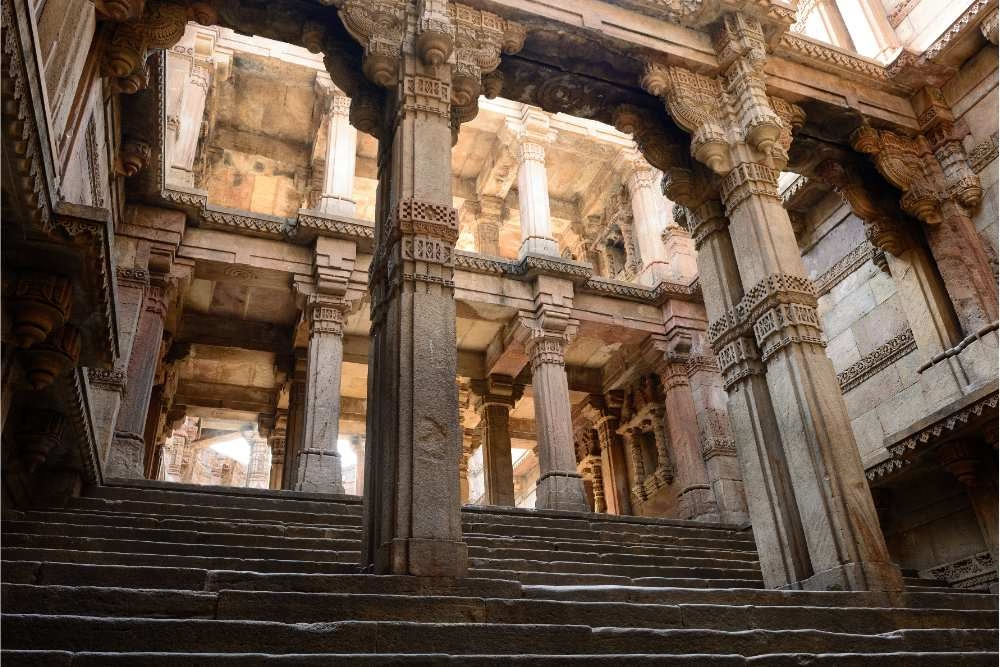
Ahmadabad’s rich cultural heritage includes intricately designed mosques, stepwells, and temples. The walled city, which features beautiful wooden houses and centuries-old markets, is an example of Indo-Saracenic and Islamic architecture.
18. Humayun’s Tomb, Delhi (1993)
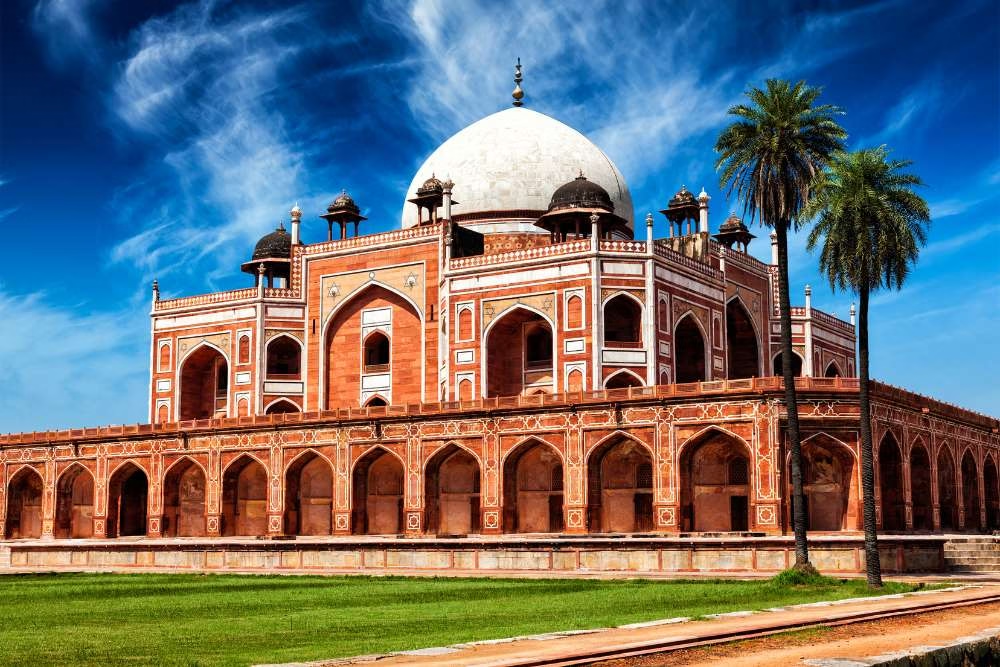
A precursor to the Taj Mahal, Humayun’s Tomb is a stunning example of Mughal garden tomb architecture. Built in 1570, it set the tone for subsequent Mughal tombs and influenced the design of the Taj Mahal.
19. Jaipur City, Rajasthan (2019)
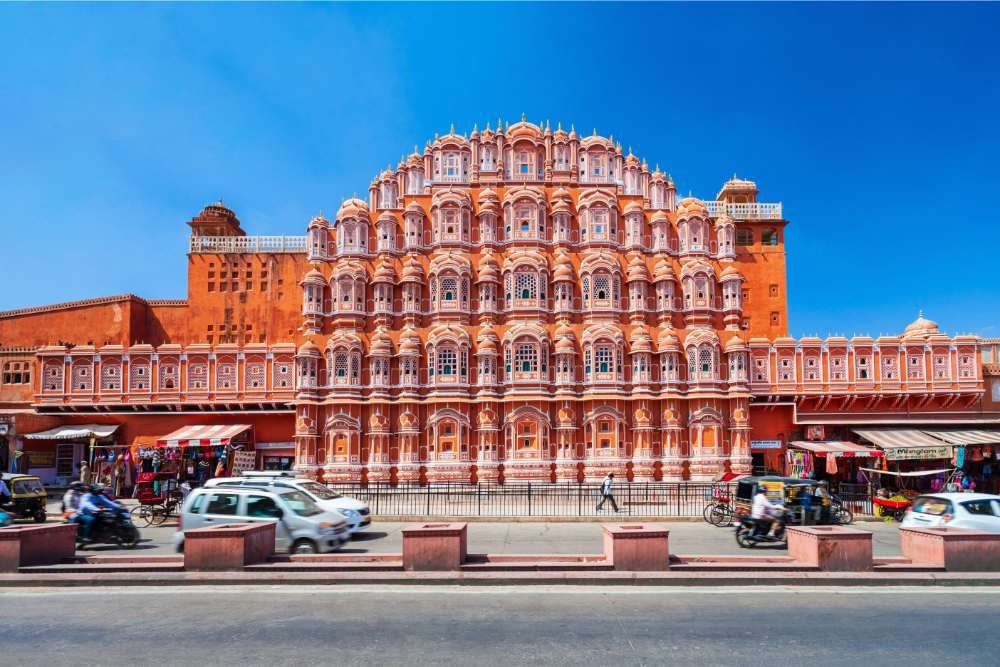
Known as the Pink City, Jaipur’s forts, palaces, and urban planning showcase a harmonious blend of traditional Rajput architecture and innovative planning. The Amber Fort and Jantar Mantar are some of its key landmarks.
20. Kakatiya Rudreshwara (Ramappa) Temple, Telangana (2021)

Built in the 13th century, this temple is an example of Kakatiya architecture and is famous for its intricate sculptures and the use of lightweight bricks in its construction.
21. Khajuraho Group of Monuments (1986)
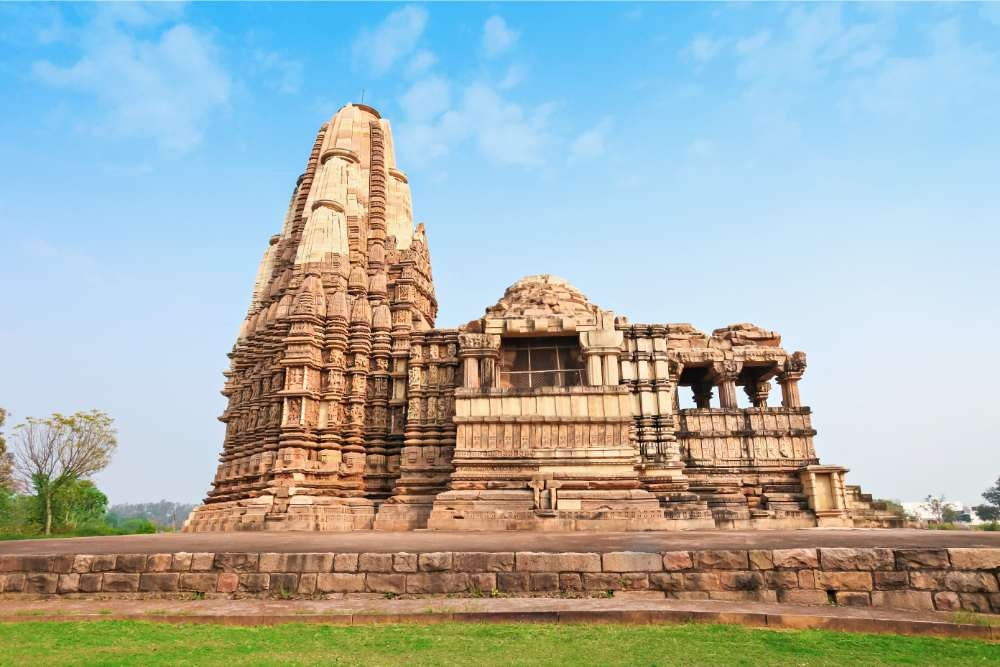
These temples, built between 950 and 1050 CE, are famous for their remarkable erotic sculptures and intricate carvings, depicting deities and scenes from daily life.
22. Mahabodhi Temple Complex at Bodh Gaya (2002)

The Mahabodhi Temple marks the site where Siddhartha Gautama attained enlightenment. It remains a major pilgrimage destination for Buddhists worldwide.
23. Maratha Military Landscapes of India (2025)

A new addition to India’s UNESCO list, this site encompasses the military landscapes of the Maratha Empire, featuring forts, battlefields, and other notable structures.
24. Moidams – the Mound-Burial System of the Ahom Dynasty (2024)
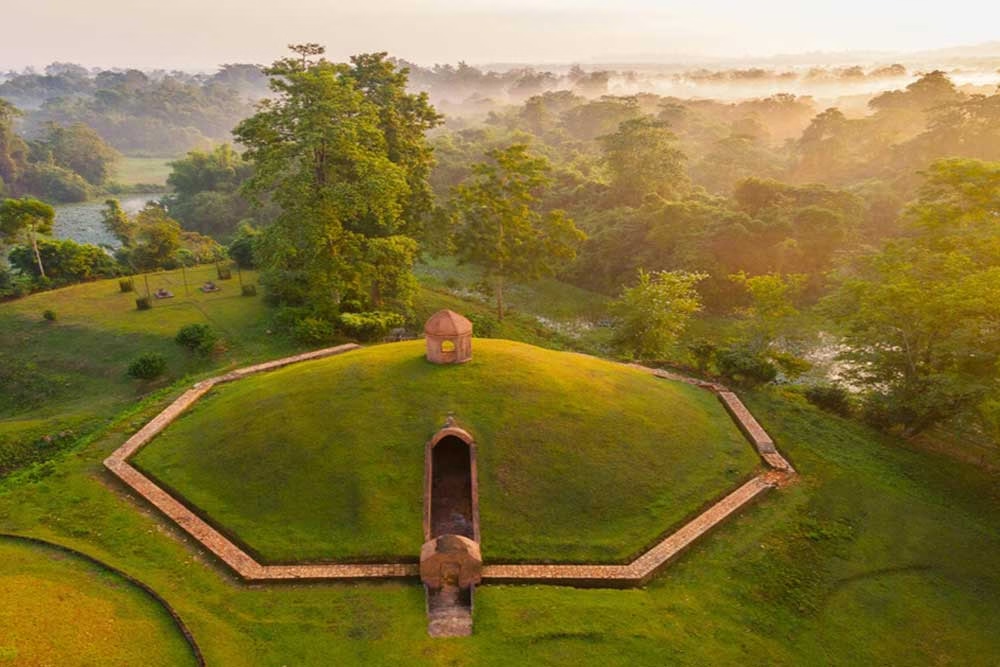
Located in Assam, these mounds are the burial sites of the Ahom kings and represent a significant cultural heritage that reflects the region’s history.
25. Mountain Railways of India (1999, 2005, 2008)
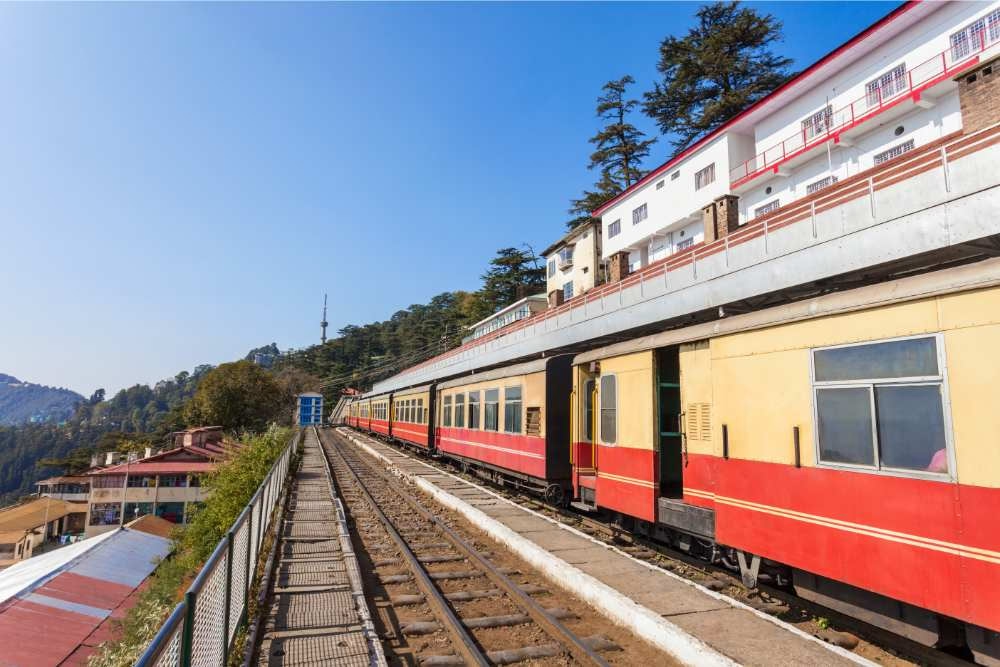
The mountain railways of India, including the Darjeeling Himalayan Railway, Nilgiri Mountain Railway, and Kalka-Shimla Railway, offer scenic journeys through India’s hill stations and valleys.
26. Qutb Minar and its Monuments, Delhi (1993)
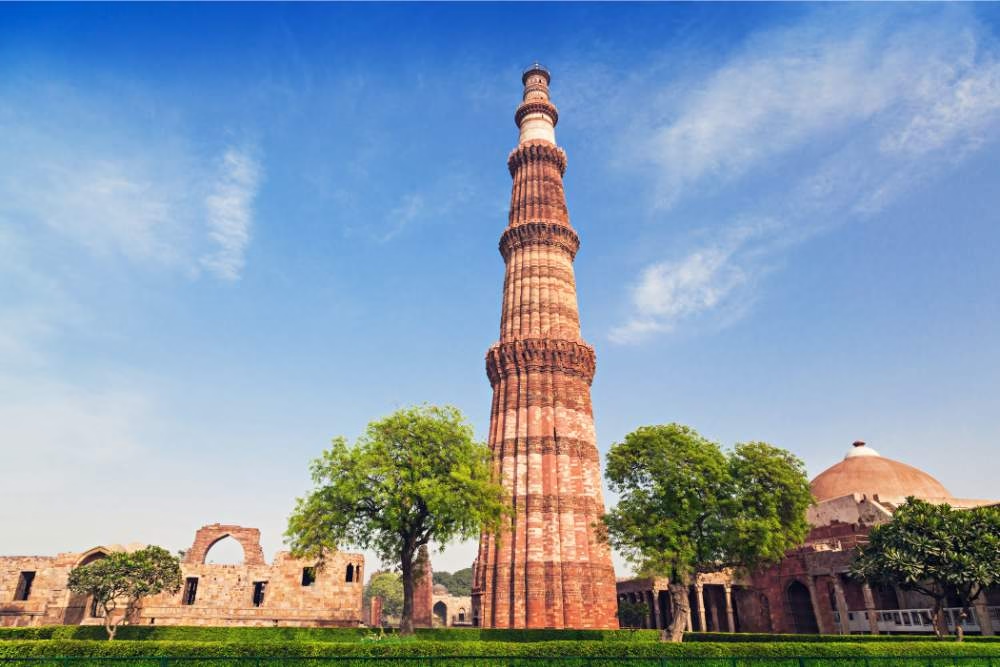
The Qutb Minar is a towering victory monument, standing at 73 meters, and is accompanied by other important Islamic structures in the Qutb complex.
27. Rani-ki-Vav (the Queen’s Stepwell) at Patan, Gujarat (2014)
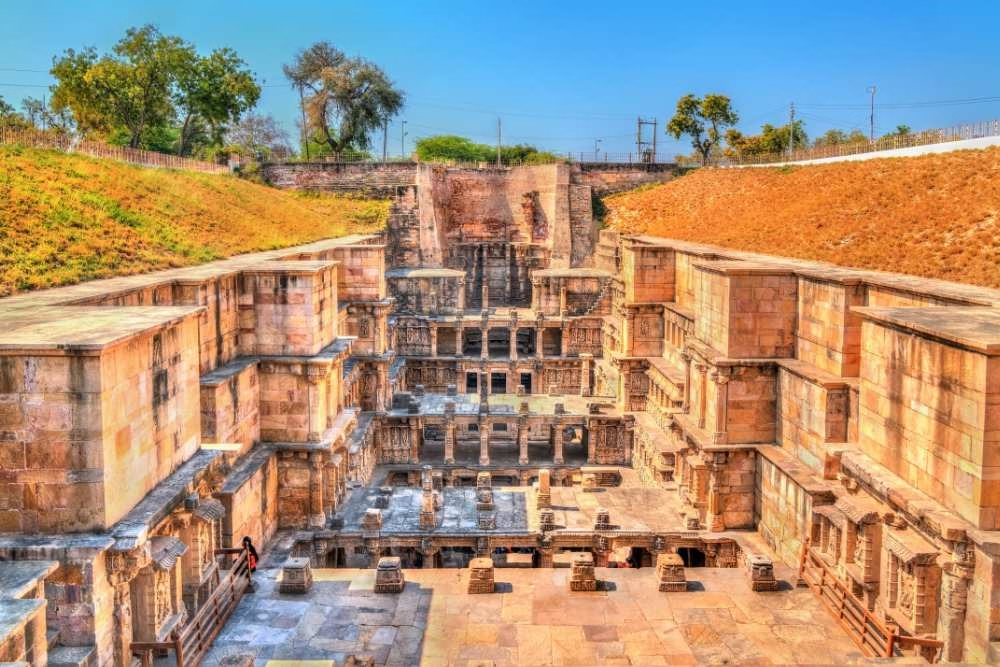
This 11th-century stepwell is known for its detailed sculpture work and is a masterclass in ancient water management techniques.
28. Red Fort Complex (2007)

The Red Fort in Delhi is a symbol of Mughal power and glory. Its impressive walls, elegant palaces, and gardens make it one of India’s most iconic landmarks.
29. Rock Shelters of Bhimbetka (2003)
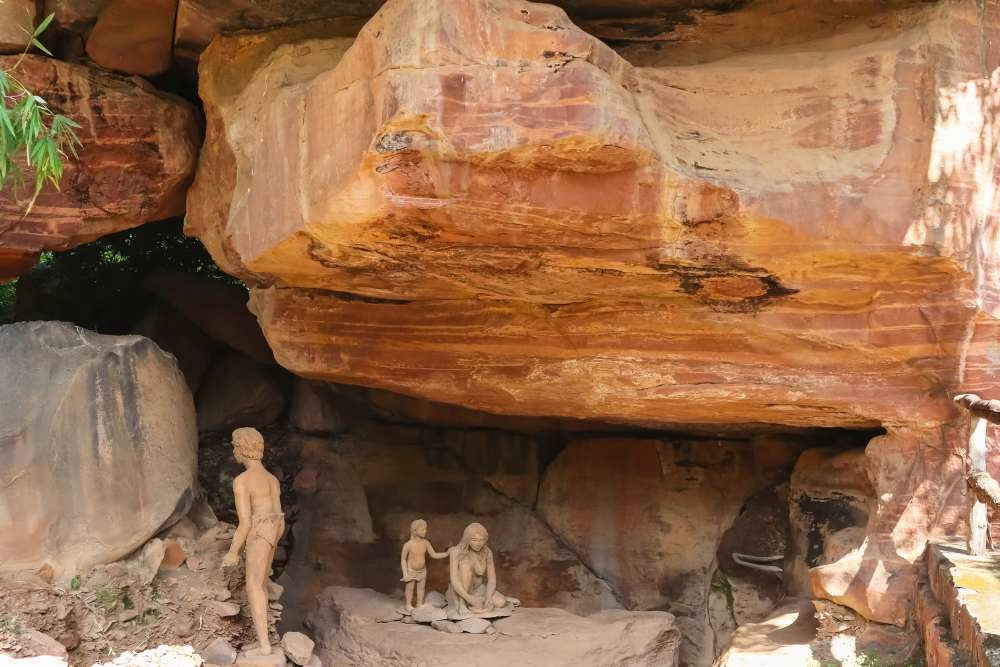
Bhimbetka’s rock shelters contain ancient cave paintings, dating back to the Palaeolithic era, offering insight into early human life.
30. Sacred Ensembles of the Hoysalas (2023)
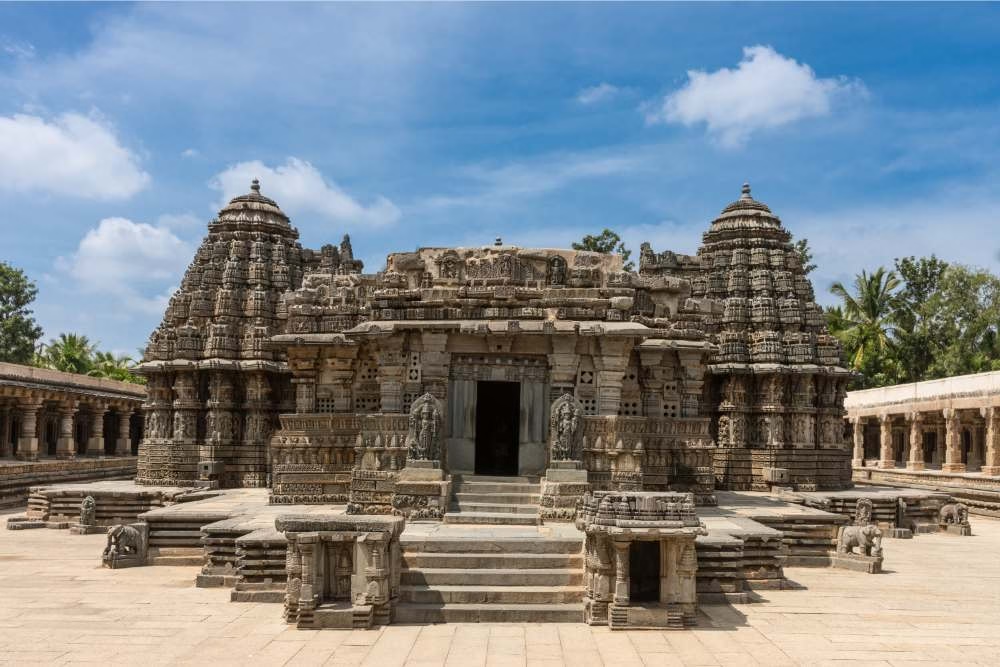
The Hoysala temples of Karnataka, such as the Chennakeshava Temple at Belur, are known for their exceptional sculptural art and architectural brilliance.
31. Santiniketan (2023)
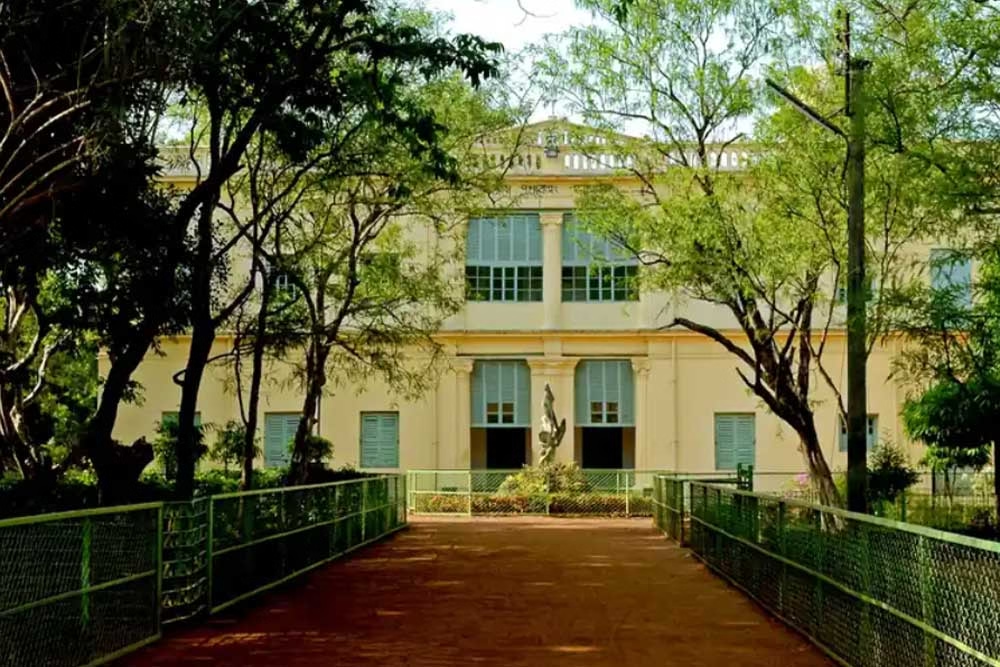
Founded by Rabindranath Tagore, Santiniketan is a cultural hub of significance where art, literature, and education flourish.
32. Sun Temple, Konârak (1984)
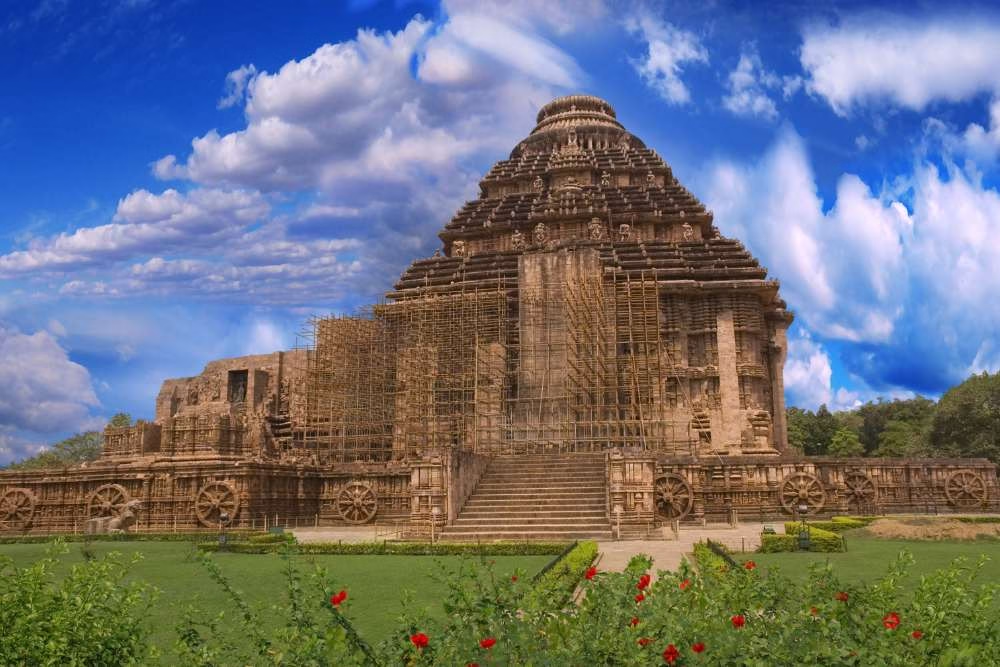
A monumental temple dedicated to the sun god Surya, this 13th-century marvel is designed as a chariot drawn by horses, featuring intricate carvings.
33. Taj Mahal (1983)
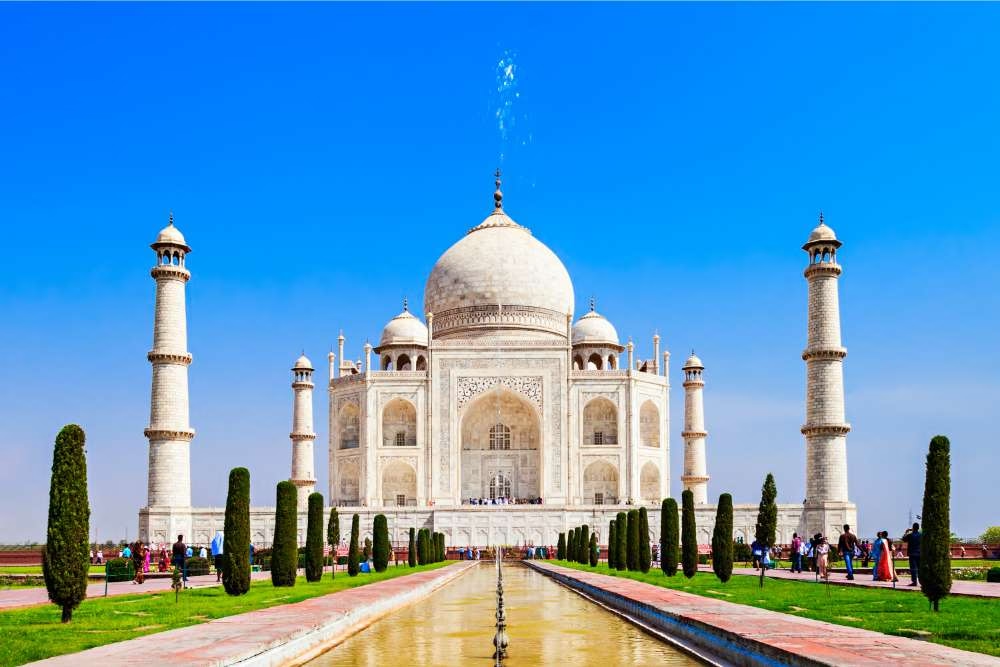
India’s most famous monument, the Taj Mahal, is a symbol of eternal love and an architectural masterpiece built entirely from white marble.
34. The Architectural Work of Le Corbusier, an Outstanding Contribution to the Modern Movement (2016)
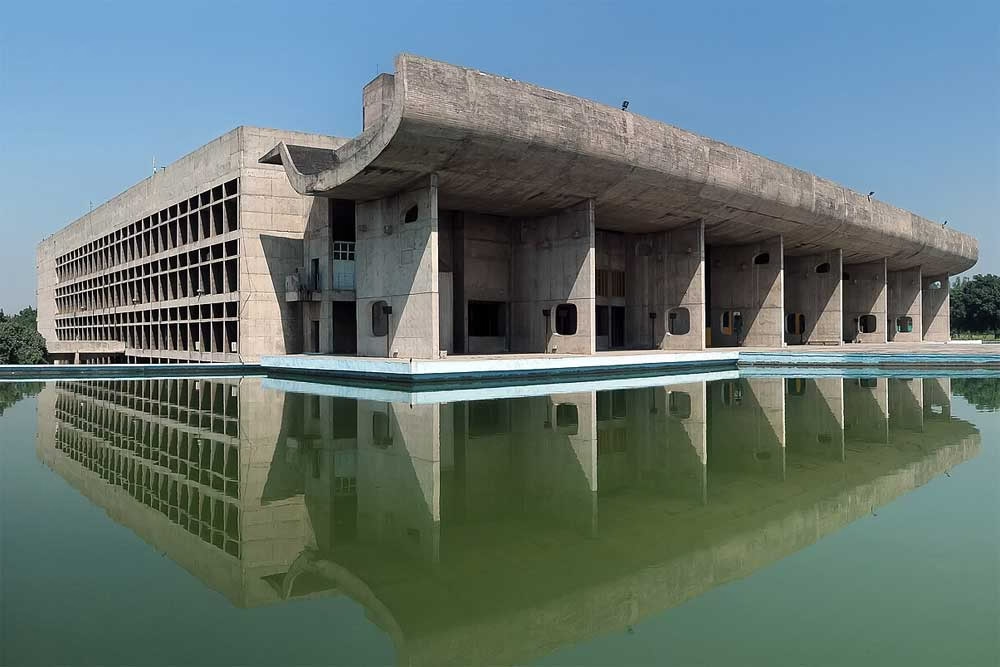
This site includes a collection of buildings designed by architect Le Corbusier, mainly in Chandigarh, showcasing groundbreaking modernist design.
35. The Jantar Mantar, Jaipur (2010)

A collection of astronomical instruments built in the 18th century, the Jantar Mantar observatories are notable for their precision and architectural scale.
36. Victorian Gothic and Art Deco Ensembles of Mumbai (2018)
This ensemble of structures in Mumbai includes both Victorian Gothic and Art Deco styles, reflecting the city’s colonial and early modern history.
Natural Sites of India
India is home to some of the world’s most unique and biodiverse ecosystems. These sites offer a stunning combination of nature and wildlife, crucial for both conservation and ecotourism.
37. Great Himalayan National Park Conservation Area (2014)
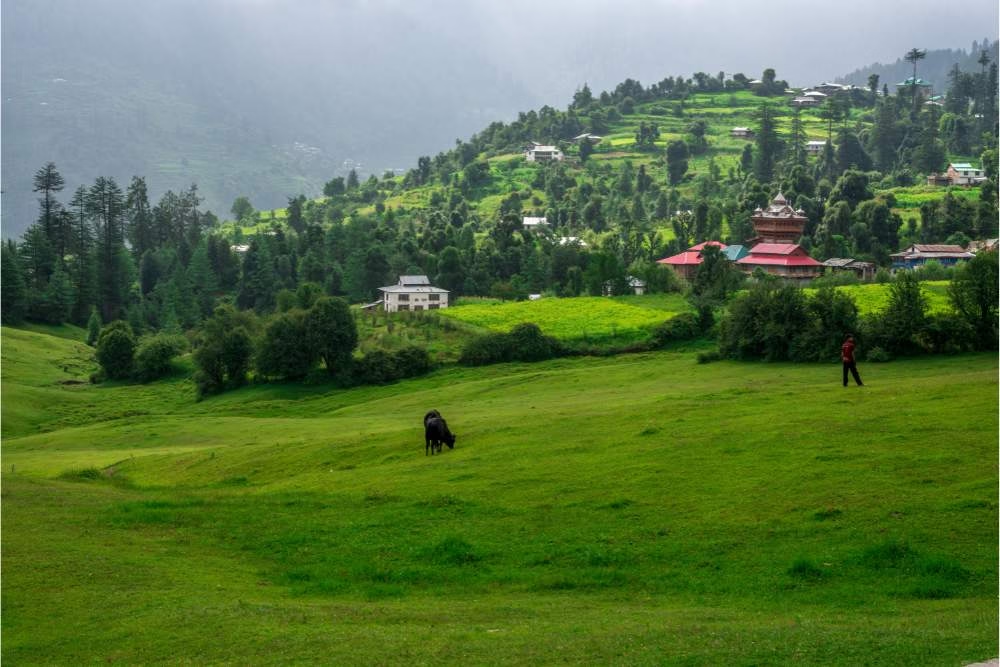
Located in Himachal Pradesh, this park is known for its pristine alpine meadows, forests, and diverse wildlife, including rare species like the snow leopard.
38. Kaziranga National Park (1985)
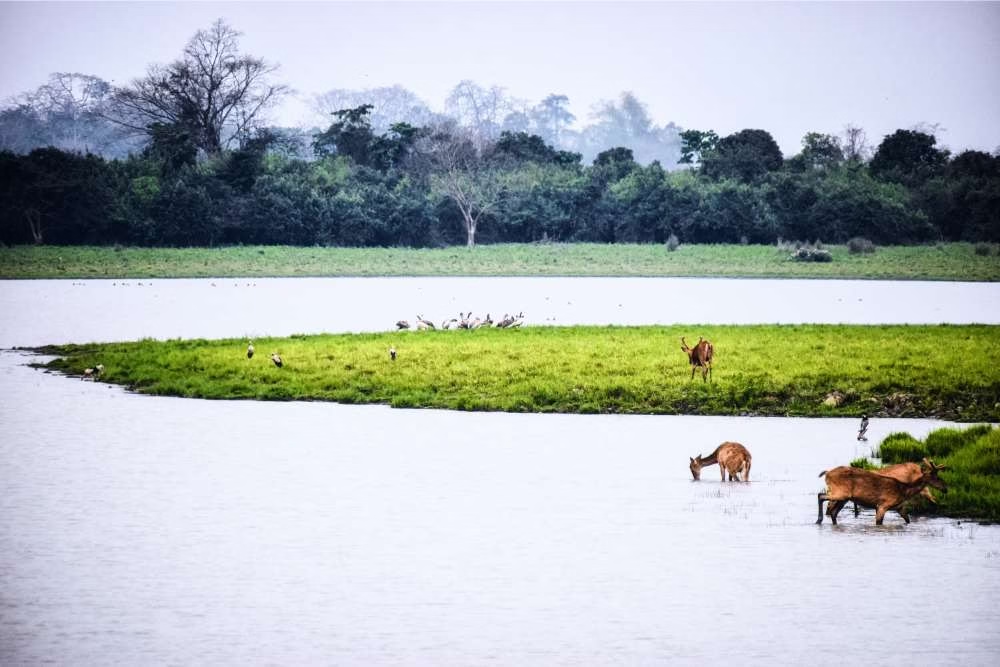
Famous for its population of one-horned rhinoceroses, Kaziranga is also home to tigers, elephants, and wild water buffalo.
39. Keoladeo National Park (1985)
A paradise for birdwatchers, Keoladeo is home to over 360 species of birds and serves as a crucial stopover for migratory birds.
40. Manas Wildlife Sanctuary (1985)
Situated in Assam, Manas is renowned for its diverse wildlife, including the endangered golden langur and the wild water buffalo.
41. Nanda Devi and Valley of Flowers National Parks (1988, 2005)
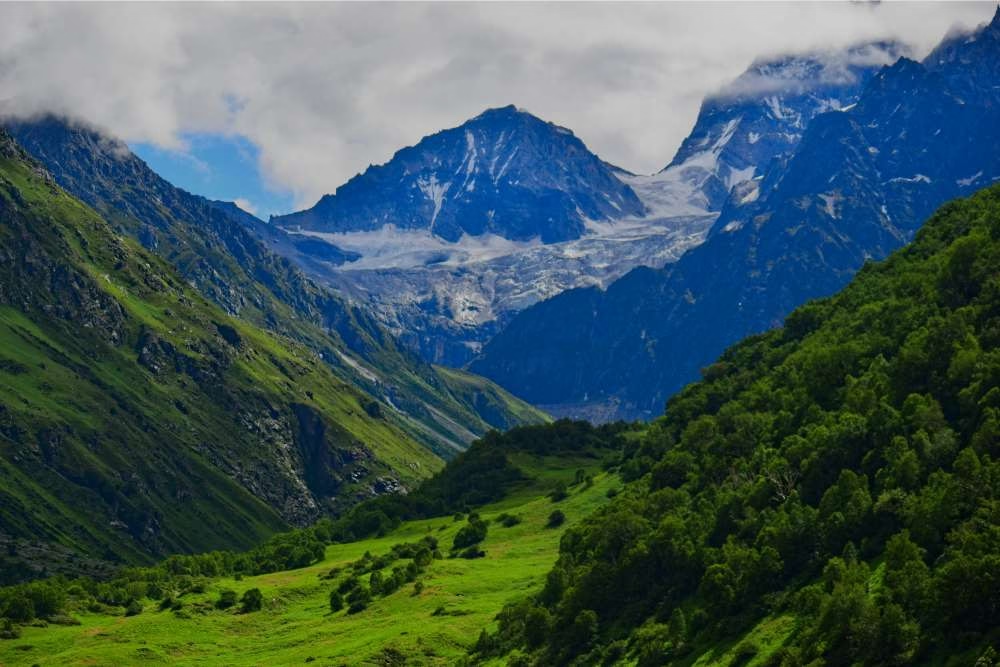
Known for its alpine meadows and diverse flora, this site is also home to endangered species like the snow leopard and the Asiatic black bear.
42. Sundarbans National Park (1987)
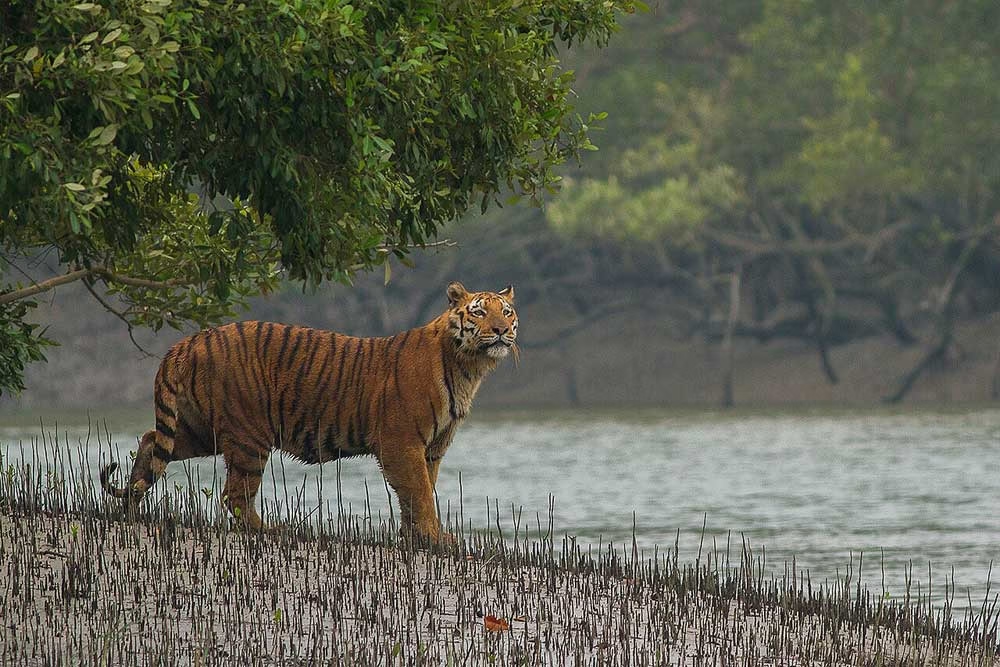
The world’s largest mangrove forest, the Sundarbans, is home to the elusive Bengal tiger, along with a variety of other wildlife.
43. Western Ghats (2012)
A biodiversity hotspot, the Western Ghats is home to thousands of endemic plant and animal species, including tigers, elephants, and various birds.
44. Khangchendzonga National Park (2016)
This mixed World Heritage Site blends the natural beauty of snow-capped mountains and glaciers with the cultural and spiritual significance of Mount Khangchendzonga, revered by the local Sikkimese community.
Planning Your Journey to India’s World Heritage Sites
- Best Time to Visit: October to March is the best time for most World Heritage Sites, especially in the northern and central regions. For natural sites in the Himalayas or the Sundarbans, summers may also be an option.
- Logistics: India has a well-connected travel network, including domestic flights, trains, and buses. A private car can be a convenient option for exploring multiple sites.
- Respectful Travel: Always dress modestly when visiting religious sites and respect local customs. Photography may not be allowed in some areas, so ask for permission first.
- Sustainability: Help preserve these incredible sites by following the guidelines provided by authorities and supporting local communities.
India’s 44 UNESCO World Heritage Sites offer a glimpse into the country’s immense historical, cultural, and natural richness. Whether exploring majestic temples, trekking through biodiverse landscapes, or marvelling at architectural wonders, these sites are more than just tourist attractions—they are living testaments to the diverse legacy of India’s past and present.





